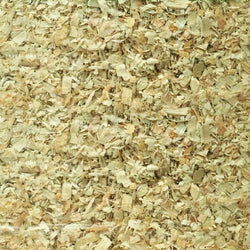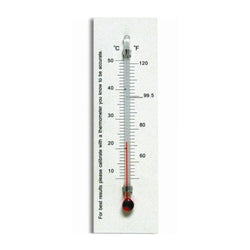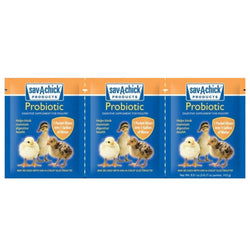Microflock: Top 7 Pet Chicken Breed Choices
Back to blog
If you have a microflock---meaning an exceptionally small flock of three to five hens---you have to be selective with your breed choices if you want to be able to gather enough eggs to supply your family.
Some towns tightly restricts on the number of hens you can keep to just three or five, so you need the best layers you can find for your little flock. Commonly, these "high production" choices will be the RIR, the white leghorn, and/or various hybrid production reds (such as the Golden Buff/Red Star). With three young hens from the above breeds in your microflock, you can usually expect 15 to 21 eggs per week in the laying season---plenty for a family (if the family is small). You won't go wrong with those choices!
But what if you're interested in keeping some less common pet chicken breeds in your microflock?
At My Pet Chicken, we find our customers often want to explore some unusual varieties. They want a mix of colors and personalities in their flock. They like unusual and beautiful plumage patterns, including stripes, spots and lacing. They want fancy feathering, like beards, crests and feathered legs. They want people to see the birds in their flock and be astounded at the varieties of chicken available. The problem is that sometimes the unusual varieties don't lay so well.
For example, Silkies---they are fabulous! But their eggs are quite small, and even though they lay relatively well when they're laying, they go broody so often that they don't usually lay a huge number of eggs per year. If you keep a flock of three silkies, it may satisfy your desire for adorable pet chickens, but it may not entirely satisfy your desire for eggs.
[caption id="attachment_4567" align="alignnone" width="518"] Silkies may be great pets, but they're not especially productive layers because they're so broody. If egg production is a concern, a silkie probably won't be a good choice for a microflock.[/caption]
Polish are similar. I mean--WOW!--look at them! With their cool top knots, they hardly look like chickens. They're more like lawn decorations, with incredibly beautiful plumage patterns and huge crests. But, if you can only keep a few chickens---and if you also want lots of eggs---you may find yourself disappointed, since they don't lay very well and their eggs are small. If you kept a flock of three young Polish, you're likely to get less than a dozen eggs a week. Considerably less.
[caption id="attachment_4568" align="alignnone" width="518"]
Silkies may be great pets, but they're not especially productive layers because they're so broody. If egg production is a concern, a silkie probably won't be a good choice for a microflock.[/caption]
Polish are similar. I mean--WOW!--look at them! With their cool top knots, they hardly look like chickens. They're more like lawn decorations, with incredibly beautiful plumage patterns and huge crests. But, if you can only keep a few chickens---and if you also want lots of eggs---you may find yourself disappointed, since they don't lay very well and their eggs are small. If you kept a flock of three young Polish, you're likely to get less than a dozen eggs a week. Considerably less.
[caption id="attachment_4568" align="alignnone" width="518"] Polish, including Polish Frizzles like this one, lay small eggs infrequently, so they aren't the best choice for a productive microflock[/caption]
They are fun additions to a larger flock of egg layers, but if you can only keep three pet chickens---and if you want eggs as well---you want chickens that are not only unusual, but also productive. When the number of chickens you keep IS tightly restricted, it is possible keep something other than leghorns, Rhode Island Reds and other common stand-bys, and still have eggs!
Here's a list of unusual---yet productive---breeds to consider for a microflock. Be sure to follow the links below for photos and more information about each breed.
Polish, including Polish Frizzles like this one, lay small eggs infrequently, so they aren't the best choice for a productive microflock[/caption]
They are fun additions to a larger flock of egg layers, but if you can only keep three pet chickens---and if you want eggs as well---you want chickens that are not only unusual, but also productive. When the number of chickens you keep IS tightly restricted, it is possible keep something other than leghorns, Rhode Island Reds and other common stand-bys, and still have eggs!
Here's a list of unusual---yet productive---breeds to consider for a microflock. Be sure to follow the links below for photos and more information about each breed.
 Beautiful!
Many of you may be wondering why I haven't included Easter Eggers on my list of good choices for a microflock. I admit I waffled on this, but finally decided against it. Easter Eggers are beautiful and friendly, they have fancy feathered beards, and another bonus is that their eggs can be shades of blue and green, which is often stunning to people who've never seen the amazing colors chicken eggs can be. But Easter Eggers are notoriously bad winter layers. Plenty of microflocks do include Easter Eggers, but before settling on this choice, be sure to consider whether or not the poor winter laying will be a problem for you.
What breeds would you recommend for a microflock--do you think I should have included Easter Eggers, or do you have any other suggestions? Please share your thoughts in the comments for the benefit of those trying to plan their first microflock.
Beautiful!
Many of you may be wondering why I haven't included Easter Eggers on my list of good choices for a microflock. I admit I waffled on this, but finally decided against it. Easter Eggers are beautiful and friendly, they have fancy feathered beards, and another bonus is that their eggs can be shades of blue and green, which is often stunning to people who've never seen the amazing colors chicken eggs can be. But Easter Eggers are notoriously bad winter layers. Plenty of microflocks do include Easter Eggers, but before settling on this choice, be sure to consider whether or not the poor winter laying will be a problem for you.
What breeds would you recommend for a microflock--do you think I should have included Easter Eggers, or do you have any other suggestions? Please share your thoughts in the comments for the benefit of those trying to plan their first microflock.
 Silkies may be great pets, but they're not especially productive layers because they're so broody. If egg production is a concern, a silkie probably won't be a good choice for a microflock.[/caption]
Polish are similar. I mean--WOW!--look at them! With their cool top knots, they hardly look like chickens. They're more like lawn decorations, with incredibly beautiful plumage patterns and huge crests. But, if you can only keep a few chickens---and if you also want lots of eggs---you may find yourself disappointed, since they don't lay very well and their eggs are small. If you kept a flock of three young Polish, you're likely to get less than a dozen eggs a week. Considerably less.
[caption id="attachment_4568" align="alignnone" width="518"]
Silkies may be great pets, but they're not especially productive layers because they're so broody. If egg production is a concern, a silkie probably won't be a good choice for a microflock.[/caption]
Polish are similar. I mean--WOW!--look at them! With their cool top knots, they hardly look like chickens. They're more like lawn decorations, with incredibly beautiful plumage patterns and huge crests. But, if you can only keep a few chickens---and if you also want lots of eggs---you may find yourself disappointed, since they don't lay very well and their eggs are small. If you kept a flock of three young Polish, you're likely to get less than a dozen eggs a week. Considerably less.
[caption id="attachment_4568" align="alignnone" width="518"] Polish, including Polish Frizzles like this one, lay small eggs infrequently, so they aren't the best choice for a productive microflock[/caption]
They are fun additions to a larger flock of egg layers, but if you can only keep three pet chickens---and if you want eggs as well---you want chickens that are not only unusual, but also productive. When the number of chickens you keep IS tightly restricted, it is possible keep something other than leghorns, Rhode Island Reds and other common stand-bys, and still have eggs!
Here's a list of unusual---yet productive---breeds to consider for a microflock. Be sure to follow the links below for photos and more information about each breed.
Polish, including Polish Frizzles like this one, lay small eggs infrequently, so they aren't the best choice for a productive microflock[/caption]
They are fun additions to a larger flock of egg layers, but if you can only keep three pet chickens---and if you want eggs as well---you want chickens that are not only unusual, but also productive. When the number of chickens you keep IS tightly restricted, it is possible keep something other than leghorns, Rhode Island Reds and other common stand-bys, and still have eggs!
Here's a list of unusual---yet productive---breeds to consider for a microflock. Be sure to follow the links below for photos and more information about each breed.
Top 7 Pet Chicken Breeds for your Microflock
- Plymouth Rock - The Barred Plymouth Rock is an heirloom favorite. They produce nearly as well as the Rhode Island Red, and have a similar, friendly personality, but their back-and-white striped plumage is far more striking than the plain red of the RIRs. Also consider other plumages of Plymouth Rock, such as the Partridge or Silver Penciled.
- Sussex - The Speckled Sussex is another heirloom favorite. These extraordinarily friendly birds are a particular favorite of My Pet Chicken employees, who seem to have had more than their fair share of exceptionally affectionate speckled hens. Joyce had Lenore, for example, and I myself had Hildy. Speckled Sussex are great foragers with beautiful plumage, and in addition to being generally calm, friendly birds, they're fabulous layers, too--and even lay well in winter.
- Faverolles - Salmon Faverolles have beautiful plumage, mostly white with white laced salmon feathers on their heads and backs. They also have fancy feathering, including feathered legs and beards. They lay very well, and also forage well. Since they tend to be submissive and fall at the bottom of the pecking order, they don't always do well in a small mixed flock. But if you want a small flock of an unusual and beautiful chicken breed, you couldn't do much better than keeping a flock of Faverolles.
- Dominique - The Dominique is an American heirtage breed with plumage similar to the Barred Plymouth Rock, but the Dominique's small comb means they are less susceptible to frostbite. They are good layers of brown eggs. They also tend to be more economical to feed than many backyard breeds, not only because of their relatively small size, but also because they forage extremely well. Our Dominiqies in particular seem to be customer favorites---we must have a particuarly friendly line, based on feedback from our customers, at least!
- Welsummer - Welsummers are lovely hens, with warm brown plumage with a hint of flame coloring around their necks. They're friendly and wonderful foragers, but the really unusual and interesting thing about them is that they lay a productive number of beautiful dark brown, terracotta eggs. Not only that, their eggs are often speckled. Wellie eggs are a standout in the egg carton, and fun to show off to family and friends.
- Wyandotte - Wyandottes with laced feathers have an absolutely stunning appearance. Each feather is trimmed in a contrasting color, making it look as if they're dressed in dragon scales. They're calm around people, and are very good layers of brown eggs. What's more, they're also quite cold hardy, and continue to lay relatively well during the winter.
- Hamburg - The Hamburg lays prolific quantities of small white eggs. This breed may not be the best choice for everyone: like leghorns, Hamburgs are not known for friendliness, and they tend to need a lot of space. They are also good flyers, so they can be hard to keep contained! Nonetheless, if you do have room, Hamburgs can make a beautiful addition to your backyard flock, because they eat little, forage extremely well, and lay plenty. If you were considering Leghorns, you might want to consider Hamburgs instead.
 Beautiful!
Many of you may be wondering why I haven't included Easter Eggers on my list of good choices for a microflock. I admit I waffled on this, but finally decided against it. Easter Eggers are beautiful and friendly, they have fancy feathered beards, and another bonus is that their eggs can be shades of blue and green, which is often stunning to people who've never seen the amazing colors chicken eggs can be. But Easter Eggers are notoriously bad winter layers. Plenty of microflocks do include Easter Eggers, but before settling on this choice, be sure to consider whether or not the poor winter laying will be a problem for you.
What breeds would you recommend for a microflock--do you think I should have included Easter Eggers, or do you have any other suggestions? Please share your thoughts in the comments for the benefit of those trying to plan their first microflock.
Beautiful!
Many of you may be wondering why I haven't included Easter Eggers on my list of good choices for a microflock. I admit I waffled on this, but finally decided against it. Easter Eggers are beautiful and friendly, they have fancy feathered beards, and another bonus is that their eggs can be shades of blue and green, which is often stunning to people who've never seen the amazing colors chicken eggs can be. But Easter Eggers are notoriously bad winter layers. Plenty of microflocks do include Easter Eggers, but before settling on this choice, be sure to consider whether or not the poor winter laying will be a problem for you.
What breeds would you recommend for a microflock--do you think I should have included Easter Eggers, or do you have any other suggestions? Please share your thoughts in the comments for the benefit of those trying to plan their first microflock.











